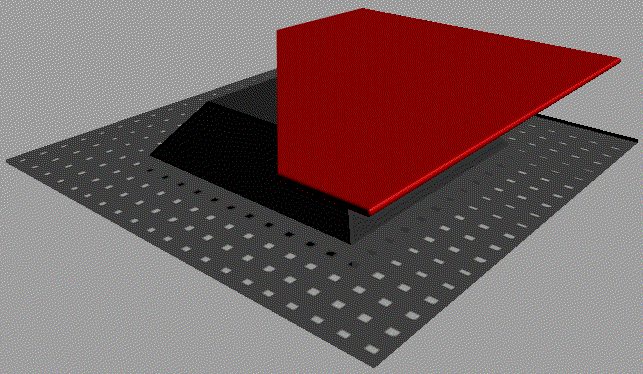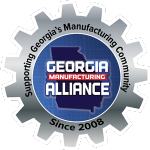Thermoforming is a fairly broad term for the manipulation of plastics. It is typically defined as a manufacturing process used to create plastic products out of heated plastic. But, there’s a lot more to it than that.
Short History of Thermoforming
Plastics have their root in celluloid, first formed in roughly 1855. From there, in the 1870s John Wesley Hayatt along with Charles Burroughs pioneered the early thermoforming practices that would be built upon for years to come. As with many advancements in technology, WWII saw a wider use of thermoformed plastics as the need for highly durable and lightweight materials increased.
The early adopters of thermoforming used many different methods to heat up the plastics such as: convection, radiant heat or even hot oil and steam. H.L. Helwig of the Rohm & Hass Company, and R.E. Leary, an engineer at DuPont filed the first thermoforming machine patent. Followed by G.W. Borkland in 1947 when he filed for a “vacuum forming” machine patent.
The commercial thermoforming industry took off in March of 1952 at the Fifth National Plastics Exhibition in Philadelphia. This was the first demonstration and sale of a vacuum forming machine.
There are multiple types of thermoforming processes but the two most popular, include vacuum forming and pressure forming (we also provide drape forming services and more). Both types are very similar in process, but they each have advantages and disadvantages.
Vacuum Forming
 The concept of vacuum forming is relatively simple. A sheet of plastic is heated to a forming temperature, stretched onto a single-surface mold, then forced against the mold using a powerful vacuum.
The concept of vacuum forming is relatively simple. A sheet of plastic is heated to a forming temperature, stretched onto a single-surface mold, then forced against the mold using a powerful vacuum.
The vacuum forming process requires a sheet of thermoplastic material like HDPE, ABS, PVC, or PC. When the material is removed from the mold, you will have a precise shape as the final result. This type of forming produces parts that are dimensionally stable on one side with high quality esthetics on the other (material) side.
Uses and Process Details
Vacuum forming is perfect for permanent objects such as turnpike signs, protective covers, or vehicle parts. It’s also appropriate for transparent materials such as acrylic. Thermoformed transparent materials are widely used in aerospace application.
It may seem like a simple process but, there are a few problems that can arise when vacuum forming isn’t completed properly. Absorbed moisture can create bubbles within the plastic’s inner layers. These bubbles can significantly weaken the plastic. When necessary we dry the plastic for an extended period of time prior to thermoforming.
Webs can also be a frustration when vacuum forming. Overheating, oversized molds, or having parts of the molds too close together can cause webs to form. Careful temperature monitoring and attention to detail can easily prevent this issue.
Formed objects can stick to the mold. It happens, but can be counteracted by using a draft angle of three degrees or more in the mold.
Pressure Forming
Pressure forming is a very similar process to vacuum forming. It goes through the same step of heating a sheet of plastic but uses compressed air to drive the warm sheets of material into the mold.
Process Details and Uses
You could say that pressure forming is an enhancement to the vacuum forming process. Pressure forming adds a pressure box to the non-mold side of the sheet. Then air pressure, up to 60 pounds per square inch (PSI), is added to the non-molded side of the sheet in addition to the vacuum on the mold side. The extra pressure, allows for sharp detail.
Pressure forming produces parts similar to an injection molded finish but has lower tooling costs. Because of the higher pressure, this technique can provide parts with sharp detail as well as multiple textures on the same part. These details make it perfect for forming things like multi-part assemblies, housings or even medical equipment.
This operation takes less time to design, which is less time tooling, creating an effective and easy process to produce prototypes or other smaller products.
Molds
All thermoforming requires molds. We find that temperature controlled aluminum molds are the best choice for consistent thermoformed parts. Molds can also be made of other materials such as wood, epoxy, and polyurethane. Our engineers design and build molds that produce high quality parts incorporating textures, and even moving pieces.
Final steps
Even though thermoforming processes differ, they all require final touches. Trimming and assembly are integral steps in our production process. We take pride designing and constructing secondary fixtures to complement our molds producing the highest quality parts.
Our 3 axis and 5 axis CNC routers can hold very tight tolerances for parts up to 10’X 10’. In certain cases manual trimming operations, hand and table routing, are performed in cycle to save cost.
Here at ThermoPro, we love to make our customer’s dreams a reality specializing in highly cosmetic parts, with exacting specifications. We offer a variety of services: vacuum forming, pressure forming, routing, assembly, drape forming, fabrication, and bonding. We manufacture thermoformed plastic parts using PETG, ABS alloys, Polyethylene, Styrene, Polycarbonate, TPO, and other engineered plastics.
If you have any questions or you would like more information, our experienced team is ready to assist you.

